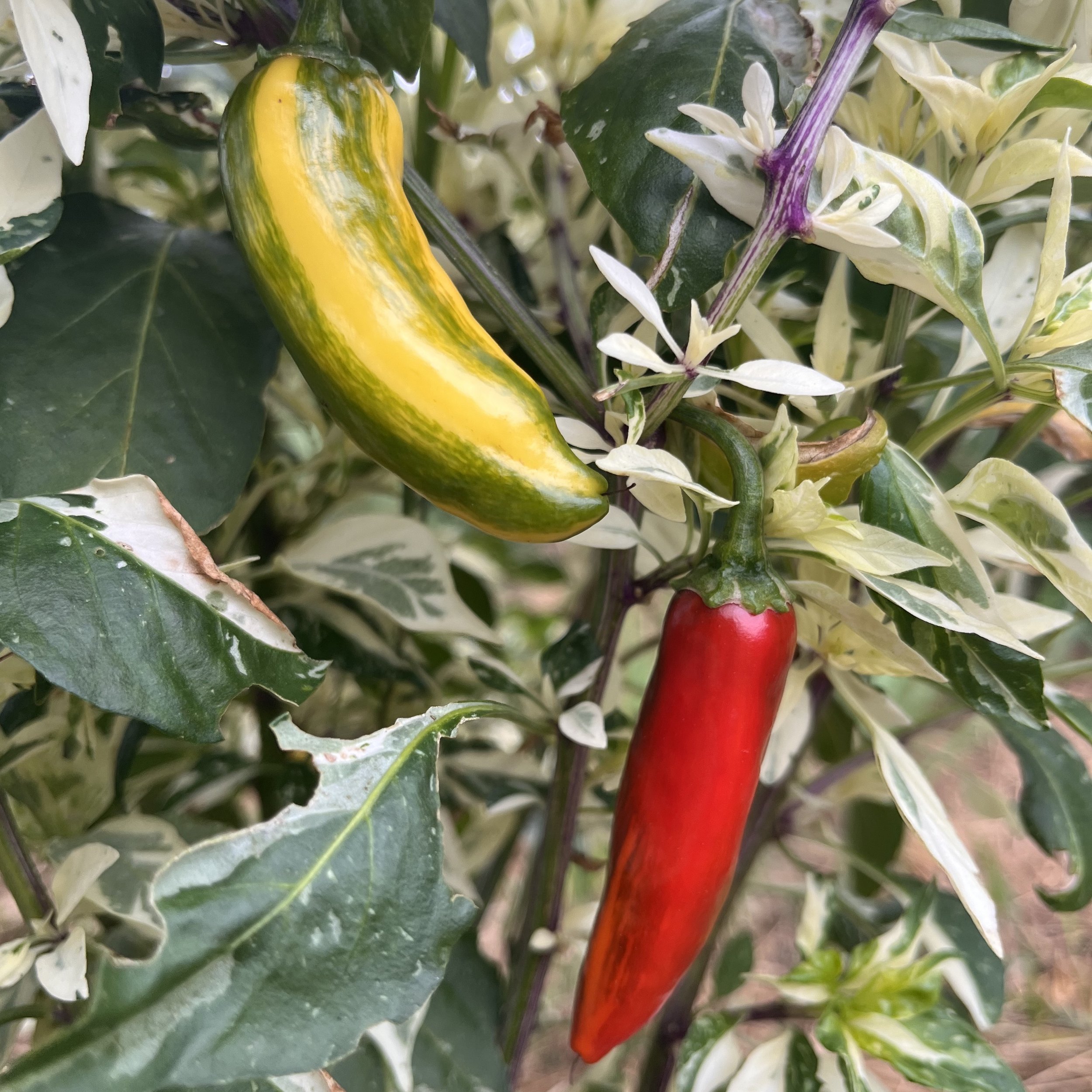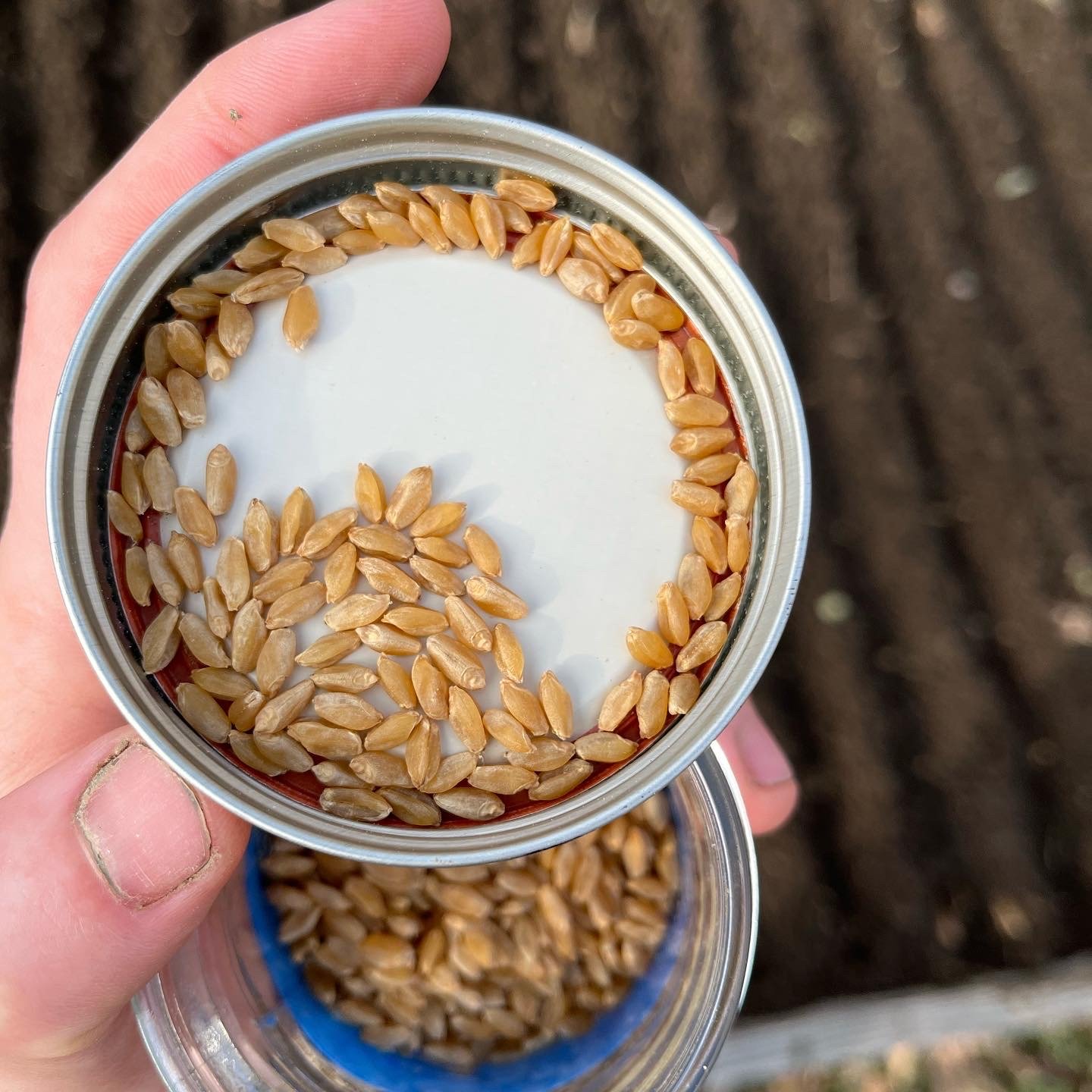 Image 1 of
Image 1 of


Pepper, Fish
Product Description: (Capsicum annuum) Horace Pippin never bore witness to the revival of the Fish pepper nor did he have any way of knowing that his seeds would one day be the last of their kind.
Now regarded as one of America’s most influential painters, Pippin is best known for his wide-ranging depictions of African American life, biblical scenes, the brutality of war, and racial segregation. The bulk of Pippin’s biography is in service to his artistic accomplishments but buried somewhere in the footnotes, you may also find that the historic fish pepper would not still exist without him.
This pepper sports variegated colors of red, green, and cream-white alongside a tropical, spicy flavor. Fish peppers also served more functional uses such as deterring garden pests. Oral histories even tell of enslaved people using these peppers to mask their scents in an attempt to confuse pursuing bloodhounds and escape to freedom.
By the mid-20th century, these tales were all that fish peppers were remembered by but some old seeds descending from Horrace Pippin himself unknowingly survived in the freezer of a Pennsylvania beekeeper. Pippin, who suffered an injury in WWI, struggled with arthritis in his later years and bee stings were his pain relief treatment of choice.
His neighbor, H. Ralph Weaver, provided Pippin with a steady supply of honey bees. Weaver didn’t particularly enjoy the task of administering stings so Pippin would often bribe him with garden seeds in exchange. It wasn’t until Weaver’s grandson, William Woys Weaver, rediscovered those seeds in 1995 that this historic variety was resurrected from its long-believed extinction. Open-pollinated. 25 seeds per packet.
Growing Information: Start indoors 6-10 weeks before your expected last frost. Transplant outdoors in late spring when the weather is consistently warm. 80 days to maturity from transplant.
How To Save Pepper Seeds
Allow the peppers to ripen before harvesting. Cut open the peppers and remove the seeds. It is easiest to do this in a large bowl of water. Dry the seeds thoroughly, remove any that appear damaged or immature then store in a cool, dry location until needed.
Product Description: (Capsicum annuum) Horace Pippin never bore witness to the revival of the Fish pepper nor did he have any way of knowing that his seeds would one day be the last of their kind.
Now regarded as one of America’s most influential painters, Pippin is best known for his wide-ranging depictions of African American life, biblical scenes, the brutality of war, and racial segregation. The bulk of Pippin’s biography is in service to his artistic accomplishments but buried somewhere in the footnotes, you may also find that the historic fish pepper would not still exist without him.
This pepper sports variegated colors of red, green, and cream-white alongside a tropical, spicy flavor. Fish peppers also served more functional uses such as deterring garden pests. Oral histories even tell of enslaved people using these peppers to mask their scents in an attempt to confuse pursuing bloodhounds and escape to freedom.
By the mid-20th century, these tales were all that fish peppers were remembered by but some old seeds descending from Horrace Pippin himself unknowingly survived in the freezer of a Pennsylvania beekeeper. Pippin, who suffered an injury in WWI, struggled with arthritis in his later years and bee stings were his pain relief treatment of choice.
His neighbor, H. Ralph Weaver, provided Pippin with a steady supply of honey bees. Weaver didn’t particularly enjoy the task of administering stings so Pippin would often bribe him with garden seeds in exchange. It wasn’t until Weaver’s grandson, William Woys Weaver, rediscovered those seeds in 1995 that this historic variety was resurrected from its long-believed extinction. Open-pollinated. 25 seeds per packet.
Growing Information: Start indoors 6-10 weeks before your expected last frost. Transplant outdoors in late spring when the weather is consistently warm. 80 days to maturity from transplant.
How To Save Pepper Seeds
Allow the peppers to ripen before harvesting. Cut open the peppers and remove the seeds. It is easiest to do this in a large bowl of water. Dry the seeds thoroughly, remove any that appear damaged or immature then store in a cool, dry location until needed.
Product Description: (Capsicum annuum) Horace Pippin never bore witness to the revival of the Fish pepper nor did he have any way of knowing that his seeds would one day be the last of their kind.
Now regarded as one of America’s most influential painters, Pippin is best known for his wide-ranging depictions of African American life, biblical scenes, the brutality of war, and racial segregation. The bulk of Pippin’s biography is in service to his artistic accomplishments but buried somewhere in the footnotes, you may also find that the historic fish pepper would not still exist without him.
This pepper sports variegated colors of red, green, and cream-white alongside a tropical, spicy flavor. Fish peppers also served more functional uses such as deterring garden pests. Oral histories even tell of enslaved people using these peppers to mask their scents in an attempt to confuse pursuing bloodhounds and escape to freedom.
By the mid-20th century, these tales were all that fish peppers were remembered by but some old seeds descending from Horrace Pippin himself unknowingly survived in the freezer of a Pennsylvania beekeeper. Pippin, who suffered an injury in WWI, struggled with arthritis in his later years and bee stings were his pain relief treatment of choice.
His neighbor, H. Ralph Weaver, provided Pippin with a steady supply of honey bees. Weaver didn’t particularly enjoy the task of administering stings so Pippin would often bribe him with garden seeds in exchange. It wasn’t until Weaver’s grandson, William Woys Weaver, rediscovered those seeds in 1995 that this historic variety was resurrected from its long-believed extinction. Open-pollinated. 25 seeds per packet.
Growing Information: Start indoors 6-10 weeks before your expected last frost. Transplant outdoors in late spring when the weather is consistently warm. 80 days to maturity from transplant.
How To Save Pepper Seeds
Allow the peppers to ripen before harvesting. Cut open the peppers and remove the seeds. It is easiest to do this in a large bowl of water. Dry the seeds thoroughly, remove any that appear damaged or immature then store in a cool, dry location until needed.





